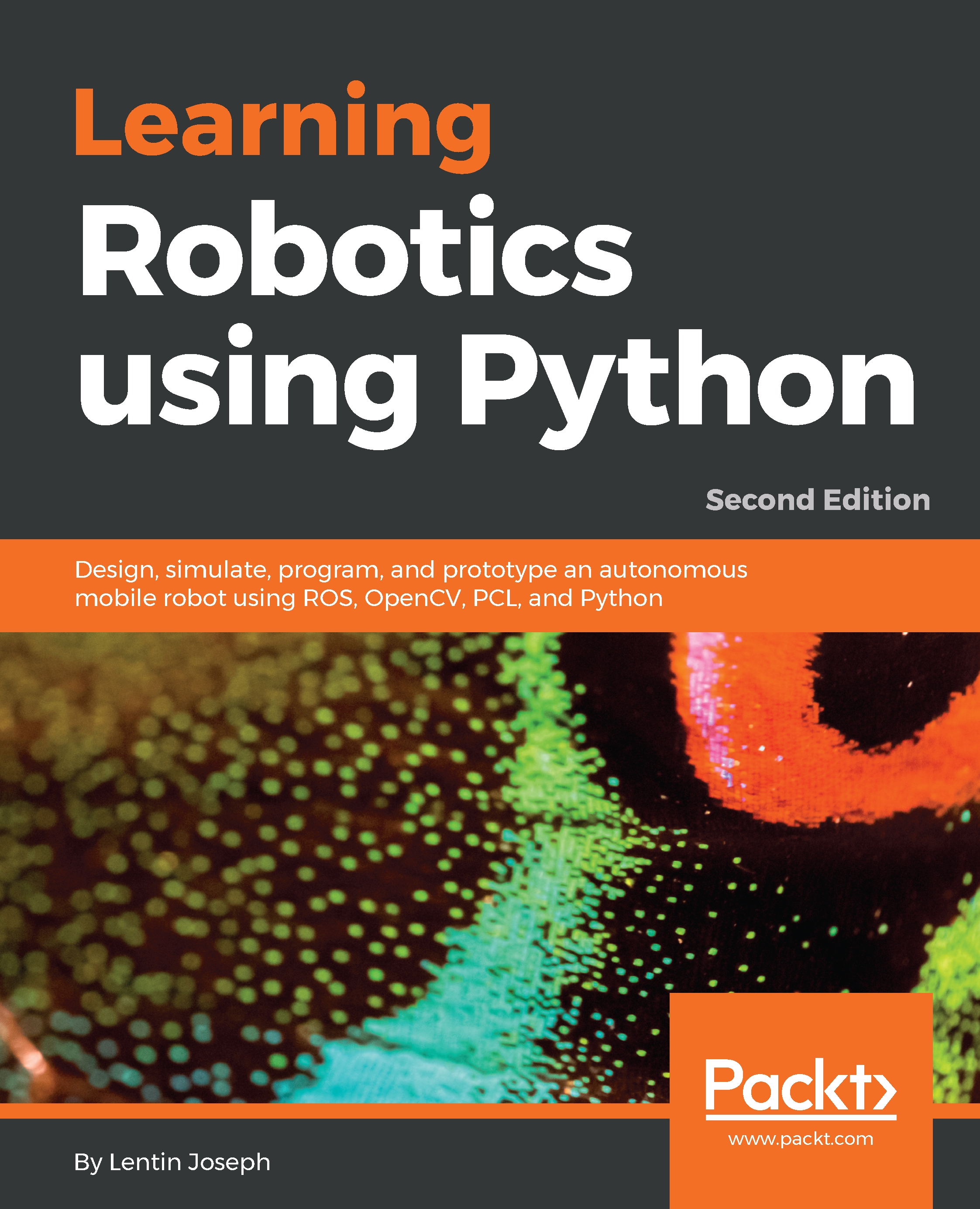Robot drive mechanism
One of the cost-effective solutions for mobile robot navigation is the differential drive system. It's one of the simplest drive mechanisms for a mobile robot and is mainly indented for indoor navigation. The differential drive robot consists of two wheels mounted on a common axis controlled by two separate motors. There are two supporting wheels called caster wheels. This ensures stability and weight distribution of the robot. The following diagram shows a typical differential drive system:

Differential drive system
The next step is to select the mechanical components of this robot drive system, that is, mainly motors, wheels, and robot chassis. Based on the requirements, we will first discuss how to select the motor.
Selection of motors and wheels
Motors are selected after a look at the specifications. Some of the important parameters for motor selection are torque and RPM. We can compute these values from the given requirements.
Calculation of RPM of motors
The range of...




































































